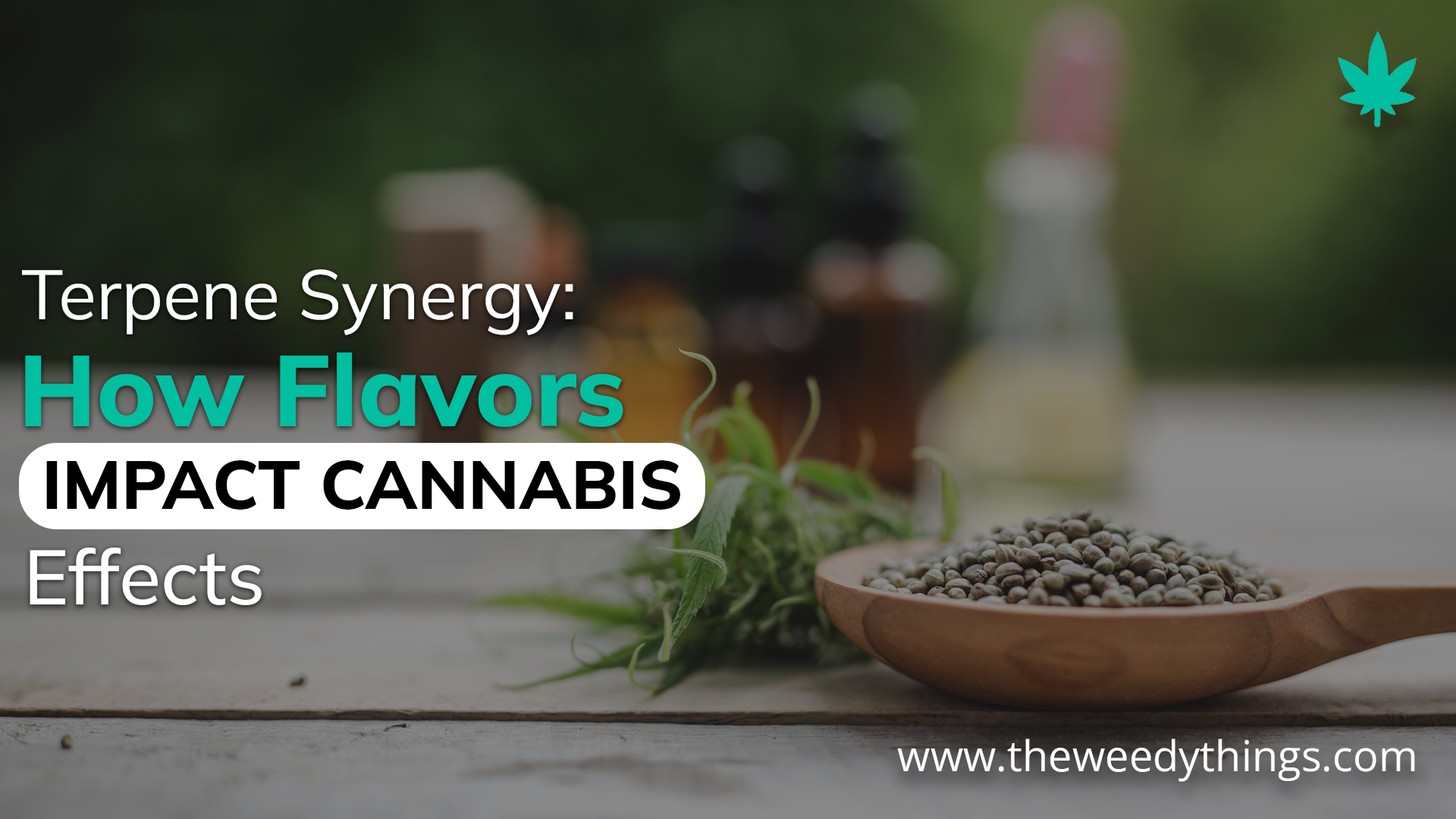When you smell a whiff of citrus, pine, or spice from your favorite cannabis strain, you’re experiencing terpenes—the aromatic molecules that give each strain its unique scent and taste. But these compounds do far more than just please the senses. In fact, terpenes work synergistically with cannabinoids like THC and CBD to enhance or moderate their effects—a phenomenon known as the entourage effect.
Let’s explore how terpene synergy shapes your cannabis experience, from flavor to feeling, and why understanding this connection is crucial for both recreational and medicinal users.
What Are Terpenes?
Terpenes are naturally occurring aromatic compounds found in many plants, including fruits, herbs, and cannabis. They are responsible for the distinctive flavors and scents of each strain and play a key role in how cannabis affects your body and mind.
Typical terpenes found in cannabis include:
The effects of terpene aroma
Myrcene Musky, earthycalming and sedative
Lemon and citrus limonenePositive, mood-enhancing
The pinenePine Anti-Inflammatory and Alert
Lavender and floral linaloolsoothing and anti-anxiety
CaryophyllenePeppery and spicyStress reduction and anti-inflammatory
What Is Terpene Synergy (Entourage Effect)?
Terpene synergy refers to how terpenes and cannabinoids (like THC or CBD) interact together in the body to create effects that are greater than the sum of their parts.
For example:
- THC alone may cause anxiety in high doses.
- But when paired with linalool or myrcene, its effects may feel more relaxing and balanced.
This synergy means that flavor isn’t just flavor—it’s part of the therapeutic or psychoactive effect of cannabis.
How Terpenes Impact the Cannabis Experience
1. Modify the High
Terpenes can enhance, reduce, or redirect the psychoactive effects of THC. A citrus-heavy strain like one rich in limonene may feel energizing, while one high in myrcene may lock you to the couch.
2. Enhance Medicinal Benefits
Certain terpenes have anti-inflammatory, anti-anxiety, or pain-relieving properties. For example, caryophyllene binds to CB2 receptors and may help reduce inflammation and anxiety.
3. Influence Bioavailability
Some terpenes may improve the absorption of cannabinoids in the body, making the effects kick in faster or last longer.
4. Affect Mood and Cognition
Scents impact the brain directly through the olfactory system. This is why aromatherapy works, and it’s also why cannabis terpenes influence mood, memory, and mental clarity.
Choosing the Right Terpenes for Your Needs
Want better sleep? Try strains with myrcene or linalool.
Need focus and energy? Go for limonene or pinene-rich strains.
Always read lab reports if available—look for terpene profiles, not just THC/CBD percentages.
No, terpenes alone don’t get you high. However, they alter how you experience the high by interacting with cannabinoids, which can make you feel more relaxed, focused, or energized depending on the terpene.
Some licensed products provide lab-tested terpene profiles on packaging. You can also recognize certain terpene dominance through aroma—citrus for limonene, pine for pinene, etc.
Yes! Terpenes exist in many essential oils and herbs. You can use them through aromatherapy or topicals, although their effects may differ without cannabinoids.
Most are safe in natural amounts, but some may cause irritation in high concentrations. Always use cannabis products as directed, and avoid synthetic terpenes in poorly regulated products.
Yes, but with extreme caution. Only use food-grade terpenes in small amounts (often less than 1%). Mixing essential oils without knowledge can be dangerous.




